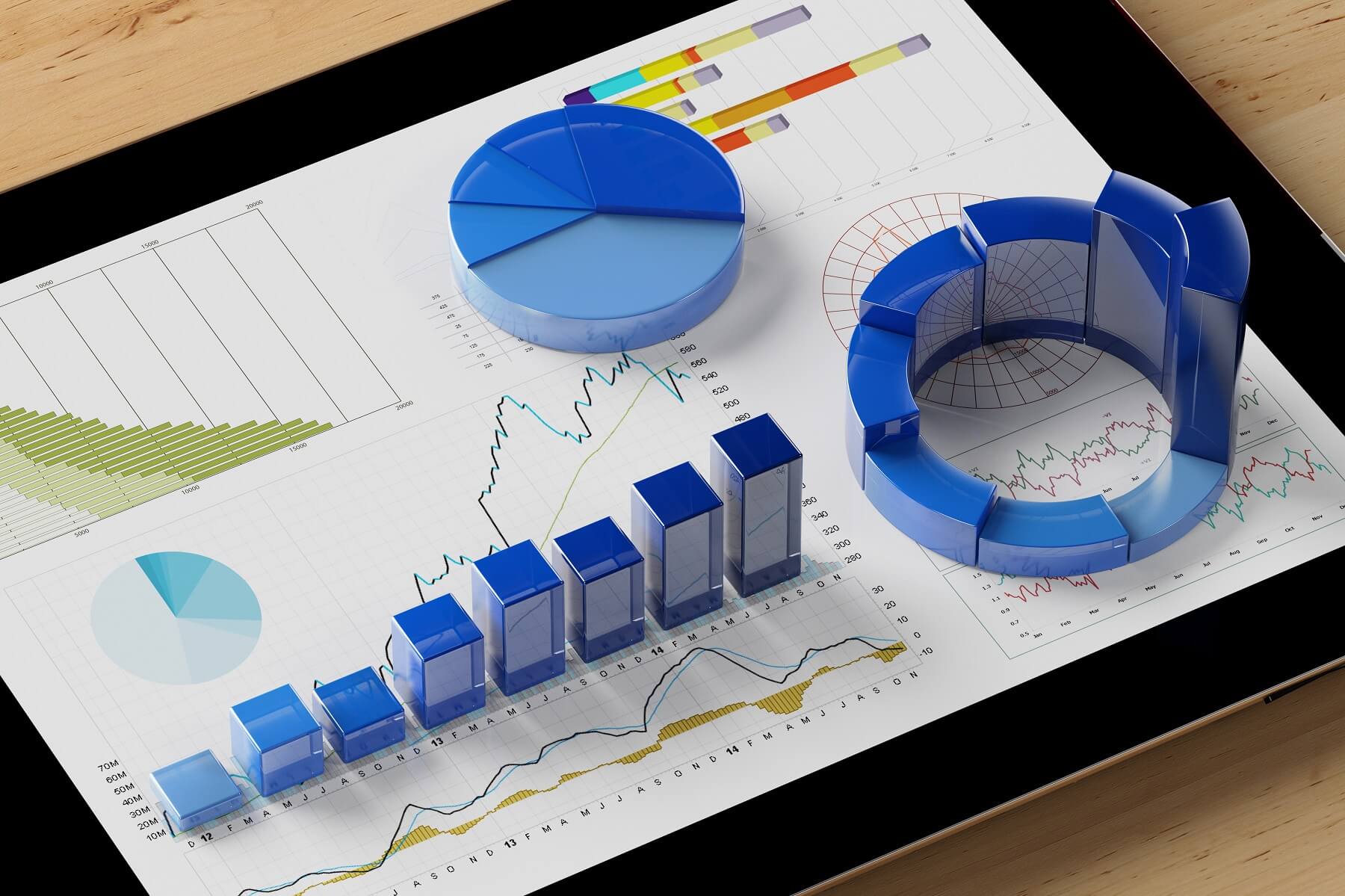Identifying effective marketing strategies are essential to growing your business. They help you tap and connect with your target audience, build brand recognition, cement brand affinity, and influence consumer behavior. It’s like a roadmap that guides business owners to achieve their goals and grow their business.
Apart from content marketing, SEO, paid advertising, and the like, Performance Marketing or performance advertising is rising to the occasion and changing the game because of how it impacts the way businesses advertise and sell their products and services.
For those who aren’t quite sure about what performance marketing entails, keep scrolling. Below, we break down what it is, how it works, why it’s important, the channels used for this strategy, and performance marketing strategies you should know.
What is Performance Marketing?
Performance marketing is a digital marketing strategy where brands only pay marketing service providers once their business goals are met or when specific actions are completed, such as a click, sale, or lead. It’s a performance-based, results-driven approach to digital marketing aimed towards more immediate goals such as lead generation and increased sales.
Performance-based marketing relies on channels such as affiliate marketing, pay-per-click (PPC) advertising, search engine marketing (SEM), and social media advertising and measures the marketing performance of these campaigns to evaluate and build brand strategies that help reduce the cost per lead and increase ROI.
It gives power to the advertiser, since they only pay after the desired goal is achieved. Because of this, they can be confident that their marketing budget is spent only on successful campaigns.
More importantly, the success rate of performance marketing campaigns is generally higher since all campaigns are highly targeted, and marketers make data-backed decisions and optimize their campaigns based on advertising performance and overall results. This serves as a win-win for both merchants and affiliates.
What Does a Performance Marketer Do?
Performance marketers are responsible for managing digital accounts and making sure that they can diversify them. Their role focuses mainly on making and posting advertisement content on multiple channels like social media, embedded web content, videos, and more.
Fast Facts and Figures about Performance Marketing
In a survey conducted by Ascend2, 69% of their respondents reported that Social Media was the most effective channel for performance marketing campaigns. (Ana)
Other channels that companies use for performance marketing are search engines (49%), e-commerce marketplace advertising (37%), partnerships/sponsorships (34%), and display advertising (27%).
Performance marketing was responsible for more than 16% of ecommerce sales in 2017. (BIGCOMMERCE)
Performance marketing is growing at an exponential rate and it’s not expected to slow down any time soon. The figure above shows that performance marketing is just as effective as email marketing and on par with display as a means of posting conversions.
According to InMobi’s Marketing in the New Normal- India and Southeast Asia: 2020 Report, it’s stated that Marketers plan to spend 60% of their budgets on performance marketing campaigns with linkage to ROI. (brandequity)
The increase in spending goes to show how effective performance marketing is in driving conversions. The same study also notes that nearly 12% of marketers are willing to spend over 80% of their budgets on performance campaigns.
In a survey that examined 2,300 marketers in the US, it was found that an average of 62% of brand and enterprise marketing budget was moving toward performance marketing. (Tune)
Spending on performance marketing is only going to accelerate as more marketers reap from its benefits. If you want to attain business growth in no time, working with a reliable agency that can provide your business with tailor-fit solutions will do just that.
How Does Performance Marketing Work?
A successful performance-based advertising or marketing campaign has four groups working together to get the desired results—retailers or merchants, publishers or affiliates, networks and platforms, and outsourced program managers. These groups are interconnected, as one cannot fully utilize the potential of the strategy and gain performance marketing insights without the others.
1. Retailers or Merchants
Otherwise known as advertisers, these are the brands or companies that sell goods and services. They look to promote their offering to accomplish specific objectives, such as generating more sales or leads, with the help of affiliate partners or “publishers.” Companies in industries like fashion, food and beverage, health and beauty, and more have everything to benefit from performance marketing.
2. Publishers or Affiliates
This refers to the companies that own and operate media channels, like websites, blogs, or social media accounts, that promote digital ads. They are also called “marketing partners.” The publishers utilize different strategies (like display banners or search ads) to promote the brand and its products/services to accomplish their goals.
3. Networks and Platforms
Third-party platforms or affiliate networks connect brands and publishers and provide a one-stop destination for resources and tools, including banners, text links, campaign performance tracking, and payment management. They serve as a way to keep both the merchant and affiliate on one page when it comes to tracking leads, clicks, conversions, and other key performance indicators (KPIs).
4. Outsourced Program Managers (OPMs)
This pertains to the firms and agencies that offer full-time performance marketing services for companies that don’t have the workforce to do it in-house. OPMs help businesses devise a marketing strategy, manage publisher recruiting, take care of campaign design, and comply with regulations to ensure that each campaign runs smoothly.
These agencies can also optimize campaign performance for maximum results through other online marketing best practices, such as landing page optimization, search engine optimization (SEO), content marketing, and more.
Performance Marketing Platforms vs Performance Marketing Agencies

Before discussing the various channels utilized for performance marketing, let’s settle the difference between performance marketing platforms and performance marketing agencies first.
A performance marketing platform makes the process of measuring clicks, leads, or sales more seamless and orderly for brands. It has built-in analytics and tracking tools that monitor varying actions. Examples include automated payments to websites and generating links that sell third-party products. But more often, publishers generate more revenue from sales commissions than PPC ads.
A performance marketing agency focuses and specializes in pay-per-action digital marketing strategies that result in conversion, which can be an inquiry for lead generation or a sale for ecommerce. Businesses work closely with an agency to get recommendations and solutions that meet their specific goals. Agencies also utilize analytics and tracking tools to report the results.
Working with a performance marketing agency is ideal because you’ll know what works for your business and what doesn’t. A reliable and experienced performance marketing agency or a performance marketing manager would want to improve your performance marketing strategies and make them work for the long term.
If you’re on the lookout for a performance marketing agency, Spiralytics is the one for you. Our dedicated team can recommend excellent performance marketing tools and work one-on-one with you to find tailor-fit solutions that will lead to your company’s success. Get in touch with us to know more!
5 Performance Marketing Channels

Now that you know what performance marketing is and how it works, let’s talk about the different channels that can be used as part of a performance marketing campaign.
1. Social media marketing
A lot of brands can find and tap into their audience on social media channels, including Instagram, Facebook, Twitter, Pinterest, LinkedIn, and TikTok. Using these platforms for your performance marketing campaigns tends to involve either influencer marketing or paid advertising strategies.
Of course, you must first determine where most of your audience is. LinkedIn mainly caters to professionals; Pinterest acts as a discovery platform for shoppers with specific interests; TikTok generally attracts younger user groups, while Facebook and Instagram have a diverse and massive user base.
The metrics commonly monitored for performance in social media marketing are likes, shares, comments, clicks, sales, and checkouts.
2. Native advertising
Native advertising is a type of ad content designed to adapt and blend well in the medium it’s published on—in other words, it doesn’t look like an ad. Based on the content the user is reading, native ads appear as contextually relevant content, and it’s been proven to work. In fact, studies show that native ads brought in an 18% greater lift in purchase intent and 9% for brand affinity responses compared to banner ads.
Performance marketers use this mostly for retargeting opportunities. They can provide potential customers with useful and valuable information to pique their interest and drive them to perform a specific action. The common metric used for native ads are pay per impression or pay per click.
3. Sponsored content
This type of performance marketing channel involves working with influencers, prominent figures, and content curation sites. They publish a post or article dedicated to advertising a brand or goods and services in exchange for payment. The payout can be in the form of free products, services, experiences, cost-per-click (CPC), cost-per-mile (CPM), or cost-per-action (CPA)-based compensation.
4. Affiliate marketing
Some people think that performance marketing and affiliate marketing are one and the same, but the truth is that affiliate marketing is a form of performance marketing.
The most common example of affiliate marketing is when advertisers place banner ads on other websites that might be related to their product or service (i.e. Google Adsense). This means their brand gains exposure to an entirely new audience and a chance to bring them to their website.
Other common examples involve companies partnering with an influencer to promote their brands and products or services, such as through a contest that helps generate registrations. The brand can then see the number of registrations and compensate the influencer according to the results.
5. Search engine marketing (SEM)
This type of digital marketing is also known as pay-per-click (PPC) or paid search advertising, and it uses native ads through sponsored search results to combine it with other types of marketing. SEM or paid search marketing pertains to when an advertiser bids on keywords and pays for the clicks they get on ads posted on search engines like Google, Yahoo, and Bing.
Keywords are the bread and butter of SEM, and choosing them takes thorough research. You can analyze both your campaign’s organic and paid search keywords to understand how they are complementary.
Performance-Based Pricing Models: How to Measure Performance Marketing
You need to measure your performance marketing campaign to improve your strategy and determine its price. You can calculate your ROI (return on investment) by tracking several key metrics, such as:
Cost Per Click (CPC)
CPC is a great first step in establishing the profitability of your promotional campaigns. As the name suggests, you only pay when a user clicks on your ad. Depending on your geography and industry, CPC can range from just a couple of cents to hundreds of dollars. To calculate CPC, you can divide the cost of your clicks by the total number of clicks your campaign received.
Cost Per Mille (CPM)
Launched in 1996, CPM is one of the first digital advertising payment models. With it, you only pay for your ad when it reaches 1,000 impressions (hence why it’s called ‘mille’). Impressions mean views; you spend every time the platform showed your ad a thousand times to viewers. CPM doesn’t require users to take action on your ad.
Lifetime Value (LTV)
LTV is becoming one of the most popular metrics in performance marketing. It analyzes a single customer’s average company relationship lifespan using advanced methods such as predictive analytics. With it, you can estimate how much revenue you can get from a customer based on their ongoing activity. You can plan strategies better and boost your ROI with the acquired data.
Conversions
Conversions require actions from the user that are more than clicks. For example, a user clicks the CTA of your ad. Conversions take a step further from CPC as users need to do a specific action like complete an online purchase, sign up for a newsletter, or call your business.
It’s a bit more challenging to track conversions than the other metrics as you would have to follow the customer’s journey through different channels, monitor your outcomes, and take note of the devices used. But, once you incorporate conversions into your strategy, you’ll be able to understand the ROI of your campaigns fully.
Clickthrough Rates (CTR)
With CTR, you’ll be able to tell if your ad campaign is efficient because you divide the total number of clicks your ad got by the total number of impressions. By reviewing your CTR data, you can determine which ads are performing well and which aren’t, guiding you with the budget setting.
Performance Marketing Benefits Your Business Can Take Advantage Of
1. Easy analytics and data tracking
Since performance marketing concentrates on boosting performance levels for your specific business goals, such as clicks, impressions, leads, and sales, you get to target and measure those metrics directly. Modern marketing management tools and technologies make it easier to track your ad performance and monitor and adjust your campaigns based on the insights gathered.
Each time a user subscribes to your mailing list, clicks on your ad, or interacts with any action that meets your goals, marketers can easily see if you’ve fulfilled your goals since they know which data to track and analyze.
2. ROI-driven marketing
Performance marketing focuses on bringing in a good return on investment. It doesn’t have the same risk as other marketing strategies like traditional advertising. Moreover, you can watch results in real-time, adjust or reallocate your budget as you see fit, and even put a full stop on campaigns to avoid overpaying for underperforming campaigns.
It ensures positive results for the goals or performance-related actions you set out to achieve.
3. Diversification of revenue streams
Performance marketing is a versatile marketing approach. When one channel doesn’t work, you can quickly pivot to another one that can bring better results. That means you don’t have to continue spending your ad budget on ineffective tactics, since you have a sure-fire way to generate revenue. This can be helpful when your other marketing channels aren’t generating the sales volume that you need.
4. Tap new and hard-to-reach audiences
An effective performance marketing plan can help you acquire an increased and more diversified audience that wouldn’t otherwise be possible with traditional advertising. This is especially true if you’re using affiliate marketing, where the outcome can bring in a larger audience, tap highly targeted traffic, and generate more sales.
Additionally, since performance marketing can come in different formats, it opens your brand to new markets as your ads find placements across various channels and content outlets.
5. Pay only for results
Instead of paying a fixed amount upfront, performance marketing agencies and marketers will charge you only when your desired action or goal is met. Typically, the payout is on a cost-per-impression basis to allow businesses to easily track their spending, ensuring their money doesn’t go to waste.
Whether you’re looking to build your mailing list, drive traffic to your website, increase the downloads for your app, or generate sales, this approach means that you only pay when these metrics are hit.
How to Do Performance Marketing
Your performance marketing approach will vary based on your company’s needs and desired results. For those new to the idea, here are some steps you can take to get started.
- Define your performance marketing campaign goal
Before you begin, it’s important to know the direction you want to lead your business to. Doing so will help you establish your priorities more clearly and give you a better idea of how to manage your process. It will also make you more aware of your limitations and the capabilities you currently possess.
- Identify the right performance marketing channels
To ensure your performance marketing efforts are a success, you need to decide which channels best suit your needs. While using multiple channels to boost your performance is ideal, it won’t do any good if they can’t help you meet your goals.
- Create your campaign and launch
The best way to get ahead of your competitors is to know how to stand out effectively. With performance marketing, you can develop new and creative ways to attract your target audience. Apart from sales and clicks, you could also build customer loyalty and better brand recognition.
- Monitor and measure
Performance marketing often requires a lot of trial and error to perfect. It’s important to regularly monitor your progress and change vulnerabilities before they result in major repercussions. Doing so will help you prevent loss and allow you to perform better.
- Optimize your performance marketing campaigns
As the industry and its trends continue to change, the current approach you’re using may not always be relevant to your target audience. It’s better to know how to optimize and adapt your performance marketing campaigns to help your business grow and meet your desired outcome.
Performance Marketing Strategies for Success

1. Experiment and optimize
Good marketers know the importance of marketing performance optimization or continuous testing and measuring when refining marketing strategies. With performance marketing, explore a range of different tactics for optimizing revenue-driving metrics to see what’s working and what’s not.
Experimenting will help you understand what’s lacking in your campaigns and how you can make adjustments to reach the goals you want to achieve. As you learn more from your campaign performance and growing experiments, you’ll build important knowledge about what tends to work specifically for your brand.
2. Choose a credible agency to avoid fraudulent results
The “pay for the results you want” arrangement is appealing for businesses indeed, especially those with a restricted budget. Likewise, it’s an attractive opportunity for some marketing firms to take advantage of their clients’ budgets by pushing fraudulent, low-value results focused on vanity metrics or obtained using black-hat tactics.
With this in mind, you must do thorough research when selecting an agency you want to entrust your business goals with. Ensure that the agency you’ll be working with is proactive and works for you, not for themselves.
3. Be compliant
The goal of performance marketing is generally to help brands tap into a broader audience, and engage and convert them into customers to boost your sales and brand recognition.
The Federal Trade Commission (FTC) has rules and regulations in place that brands and publishers need to follow to do this successfully and properly, and to avoid deceptive or unfair messaging in the campaigns. Brands and publishers must refer to the guidelines to ensure that their campaigns align and comply with the rules.
4. Review data in all channels
The benefits of performance marketing include the potential to drive immediate ROI, leading you to focus on only one channel. By putting your efforts into one channel, you lose sight of the customer behavior in the other channels. With this, you should combine all your performance marketing data from different channels to avoid missing any opportunities.
5. Test your website’s UX
When your website or mobile site’s user experience (UX) isn’t at its best, it will repel people from working with you and getting excited about your brand. Users may click on your ad, but they can easily click away when encountering a bad landing page or an unenticing offer. So, our last performance marketing tip is to check and test all the links, offers, and content you have to make sure that the customer’s journey is smooth and engaging.
Frequently Asked Questions About Performance Marketing
Performance marketing mainly focuses on customer acquisition and retention. It uses measurable variables to help define if its approach is successful or not. Affiliate marketing is a different arrangement where its main focus is generating more traffic and sales from its referrals.
Brand marketing is about building more awareness for your business while generating a deeper emotional connection with your customers. With performance marketing, you mainly focus on generating leads and sales.
Not all businesses have the necessary funds to build an in-house marketing team that can easily manage all aspects of your digital strategies. But if your budget allows it, it can be a great opportunity to learn from other experts and work together to grow your company.
Working with a performance marketing agency and using their strategies can be a big advantage for new businesses that want to grow faster and stronger in their respective industries. It can also be a good opportunity for existing brands that aren’t too familiar with the approach but want to boost their performance.
Performance marketing can be effective when you familiarize yourself with the right metrics and understand the approaches you adopt. When you know what factors to pay attention to, you can make quick changes to your strategy to get ahead and avoid dramatic losses. It can also pair well with other digital marketing strategies that help your overall operations.
Are You Ready for a Pay-As-You-Go Marketing Approach?
These days, it’s not enough that businesses establish good branding. The new age of data-backed marketing ensures you only pay for the results you want, so your ad spend is worth every penny. Performance marketing is an excellent method to build your brand, improve product awareness, and interact with your audience without worrying too much about budget constraints.

If you’re looking for a performance marketing agency to help you plan the best strategy to drive results for your business, Spiralytics, a trusted agency that provides digital marketing services in the Philippines, will take care of your business as if it’s our own.
Contact us today to get a quote!





